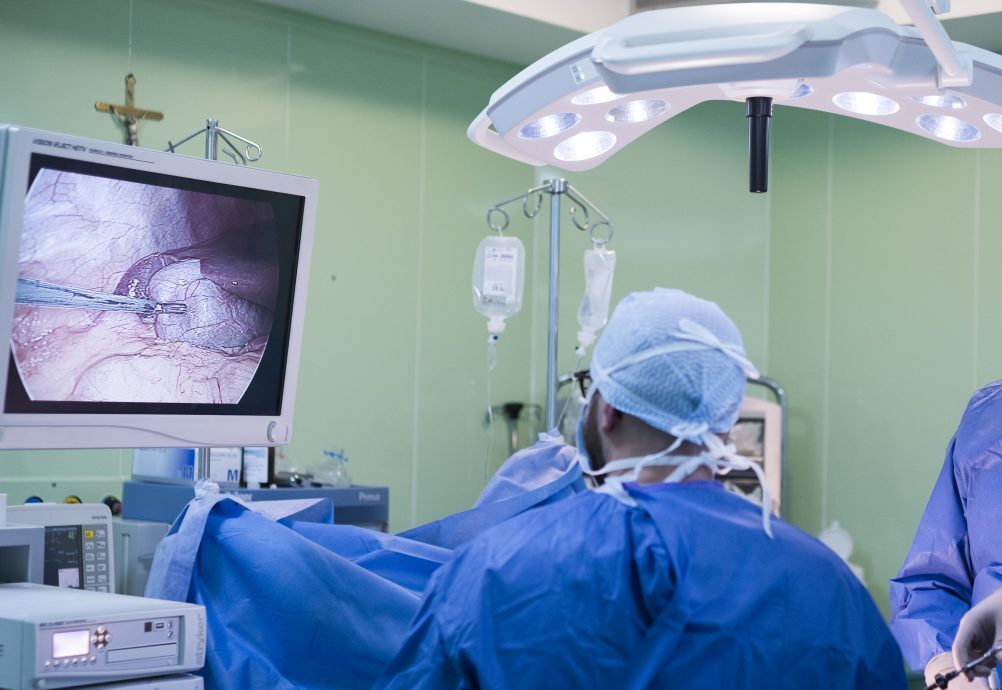Surgery today differs significantly from the procedures used several decades ago when open surgery was the only option. Previously, following traditional surgery for a hernia, colon cancer, or gallbladder disease, patients knew they would have a large incision, an expensive hospital stay, and a lengthy recovery. Today, minimally invasive surgery (MIS) is a viable alternative to many of the conventional open surgical procedures.
At The Surgery Group, we perform numerous laparoscopic procedures, including hernia repair, gallbladder removal, splenectomies, appendectomies, and adrenalectomies as well as anti-reflux, bariatric, colon cancer, and intestinal surgery. Our Board-Certified Surgeons also perform robot-assisted surgeries and, when necessary, traditional open surgical procedures.
What is Minimally Invasive Surgery (MIS)?
At the International Surgery Rome Group, we are always looking for ways to enhance patient experiences, as such, we are continually maintaining and improving our expertise. MIS is a state-of-the-art procedure that allows Surgeons to use endoscopic techniques to address a variety of issues. Since the instruments used during minimally invasive surgery are small, our Surgeons can create smaller incisions that are necessary for a traditional open surgery. The laparoscope used during this procedure has a tiny, high-resolution fiber-optic camera on its end. The Surgeon uses this camera, which is connected to a monitor, as a guide to see into the surgical area and direct the tools being used. We use laparoscopic surgery to minimize the emotional and physical impact that surgery has on our patients. This tecnique enhances our Surgeons visualization, skills, control, and precision: Thus, allowing our highly-skilled Surgeons to perform a variety of multifaceted surgical procedures.
5 Benefits of Laparoscopic Surgery
When compared to open surgery, Laparoscopic offers patients a number of benefits. For this reason, whenever possible, at The International Surgery Rome Group, we will recommend laparoscopic surgery over traditional surgery.
- Smaller incisions – Although several incisions are used during laparoscopy, they are extremely small (<½-inch to 1-inch); whereas, in open surgery, the incision size generally ranges anywhere from 3-inches to 8-inches, depending on the procedure being performed. For some laparoscopic procedures, no visible incision is necessary.
- Decreased risk of complications – The use of small incisions allows for less blood loss, a reduced risk of infection and less injury to tissue.
- Quicker recovery with less pain – During open surgery, the longer incision can lead to increased abdominal wall pain and a lengthened recovery time. Recuperation time following traditional surgical procedures can be extensive (typically, four to six weeks): However, with Laparoscopic Surgery, recovery time may be as short as a few days depending on the procedure. Laparoscopic Surgery allows for a shorter hospital stay, with many patients returning home on the day of their procedure.
- Reduced scarring – Since laparoscopic surgery requires smaller incisions, the scars themselves are also smaller than those seen with traditional surgical procedures.
- Less expensive than traditional surgery – Since Laparoscopic Surgery reduces the number of office appointments, the amount of time spent in the hospital, anesthesia and the need for medications following the procedure, the overall costs associated with Laparoscopic Surgery are reduced.















